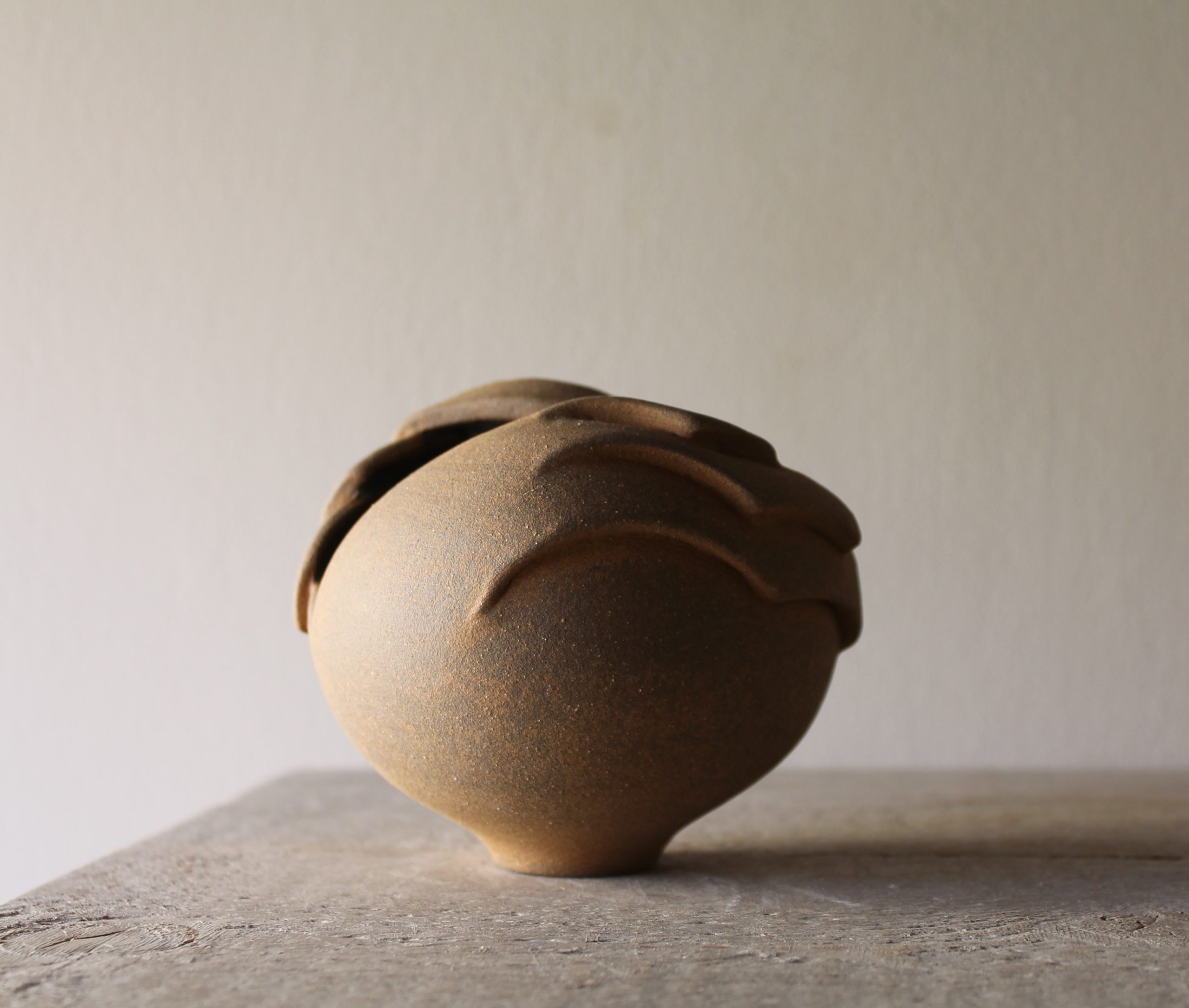Earth Flower
Umi Amanuma, a ceramist living and working in Fiesole, identifies with Albert Einstein’s renown quote: “look deep into nature and you will understand everything better.” In her most recent series, she has developed a deeply meaningful set of principles through her ceramic practice, based on the characteristics of petals, flowers, germination, blooming and division. With varying shapes appearing inside and out of her works, her objects can be singularly compared to the very
germinating plants she is so focused on, and specifically the animation in this action. Like props from a cult science fiction story, or creatures from a Hayao Miyazaki animation, her biomorphic objects are like nature morte cartoons.
Umi’s expressions of germination, blooming and division are made with, two, four or more segments appearing as if they are just about to blossom into another form. The curvaceous objects, frozen in time and space, are sculptural entities that have interior and exterior interactions; visibly positive and negative spaces, each forming new shapes. Umi thinks bidimensionally whereby her 3-D objects are like drawings coming into physical space rather than simply on paper. Her practice is an exercise to understand nature’s artistic expression of germination, blossoming and flowering. Moreover, she transforms her works by means of incising linear patterns onto their surfaces adding movement in the objects, thus making them more animate. In contemporary culture, the art of ceramics achieves a role beyond the once thought of functional object.
Such contemporary artists such as Fausto Melotti, Arlene Schechet, Per B Sundberg or Emanuel Boos, to name a few renown ceramicists, have expanded the vision of ceramics as an art form beyond functional craft and into a hybridised abstract and/or figurative sculpture. As contemporary Italian sculptors such as Arnaldo Pomodoro have created works appearing to be caught in the process of gradually transforming one object into another altogether, Umi Amanuma’s recent ceramics takes part in this notion whereby the functional object gradually transforms into a sculptural object. The vase is no longer a vase, but a work of art, having the potential to continuously change under observation from various perspectives.
Jeff Gleich















